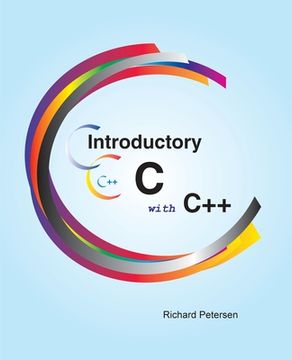Reseña del libro "Introductory C with C++ (en Inglés)"
C differs from most programming languages in its use of expressions, pointers, and arrays. For those learning C, pointers are the greatest source of confusion. The primary aim of this text is to provide working models of how pointers are used in C as well as an introduction to their use in C++. Most beginners falter on the use of pointers. Many try to avoid pointers completely, but quickly find that pointers are used extensively throughout C programs. Some attain a partial understanding of pointers which, at first, gets them by. However, when faced with complex programming tasks, they find that pointers become a necessity. In most programming languages one learns about pointers only after most other topics have been discussed. Pointers are just one more added feature of the language. In C and in C++, however, pointers are used with every feature. There are pointers to variables, pointers as parameters, pointers as arrays, pointers to structures, and even pointers to pointers. With each feature pointers are used differently. The way pointers work with variables is very different from the way pointers work with arrays. In this text, you learn pointers as you learn each feature of the language. With variables, you learn pointers to variables; with parameters, pointers to parameters; with functions: pointers to functions; with arrays, pointers in arrays; with structures, pointers to structures. In addition, for C++ you will learn pointers to objects, to class members, and derived objects. Such an approach provides an understanding of the many different ways pointers are used throughout the language. The text is arranged in five sections. The first section focuses on the basic structure of the language. Variables, functions, and expressions are carefully examined. The second section deals with arrays. Arrays form an exception in C. Unlike structures they are not data objects. They are completely managed by pointers. The third section describes data structures and file management. The chapter on data structures introduces basic concepts such as linked lists and trees. A special examination is made of recursion and how it operates with lists, trees, and b-trees. The chapters on file management discuss the different types of files with special emphasis on record files b-tree indexes. The fourth section provides an introduction to C++, covering classes and objects, their use with pointers, as well as operator overloading and inheritance. The fifth section covers additional topics greater detail such as the pre-processor and bitwise operations.

